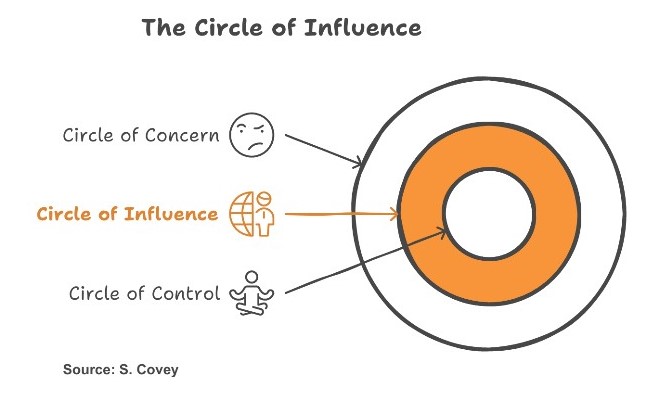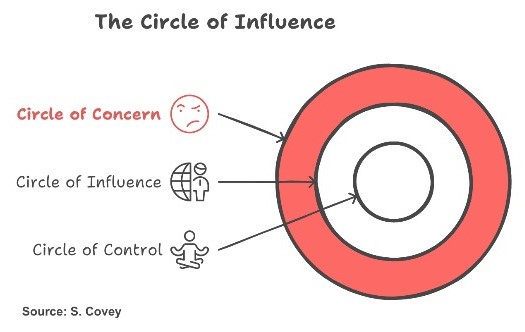The Circle of Influence- Reduce stress and Increase focus

The world is moving fast, and with that comes a lot of uncertainty. From company restructuring to policy changes to the growing impact of AI, it’s easy to feel stressed out and overwhelmed.
But here’s the thing: not everything is within our control. In fact, recognizing what isn’t can be profoundly liberating. By focusing on the things we can influence, we gain clarity, reduce stress, and reclaim our energy.
One powerful tool I use in executive coaching is Stephen Covey’s Circle of Influence. It’s a simple yet effective framework that helps us distinguish between the things we can control, the things we can influence, and the things we simply need to let go of.
I’d love to take a moment to share how this tool works and why it’s so impactful in helping leaders navigate uncertainty with confidence and focus.
Let’s dive in.
1. Circle of Control This innermost circle includes everything you have direct control over -your thoughts, behaviors, actions and mindset.

2. Circle of Influence The second or middle circle covers areas you have indirect control or influence over. As your role and responsibilities in a company grow, this circle expands.

3. Circle of concern. The outermost circle contains things you may worry about but have no power to control -examples include global events, some corporate policies, mergers and acquisitions or even a potential future AI takeover! Spending energy here drains important emotional bandwidth. Instead, try to shift you focus inward.

By focusing on your circle of influence you can strengthen relationships with managers, stakeholders and others. This shift will leave you feeling more empowered and productive.
A Harvard study found that professionals who prioritize their Circle of Influence are not only less stressed but also 25% more likely to be seen as proactive and effective by their peers.
Try this: In a management setting you can use this tool to map out concerns related to a specific project or situation. Categorize issues into the 3 circles, then facilitate a group discussion to identify actionable steps.
